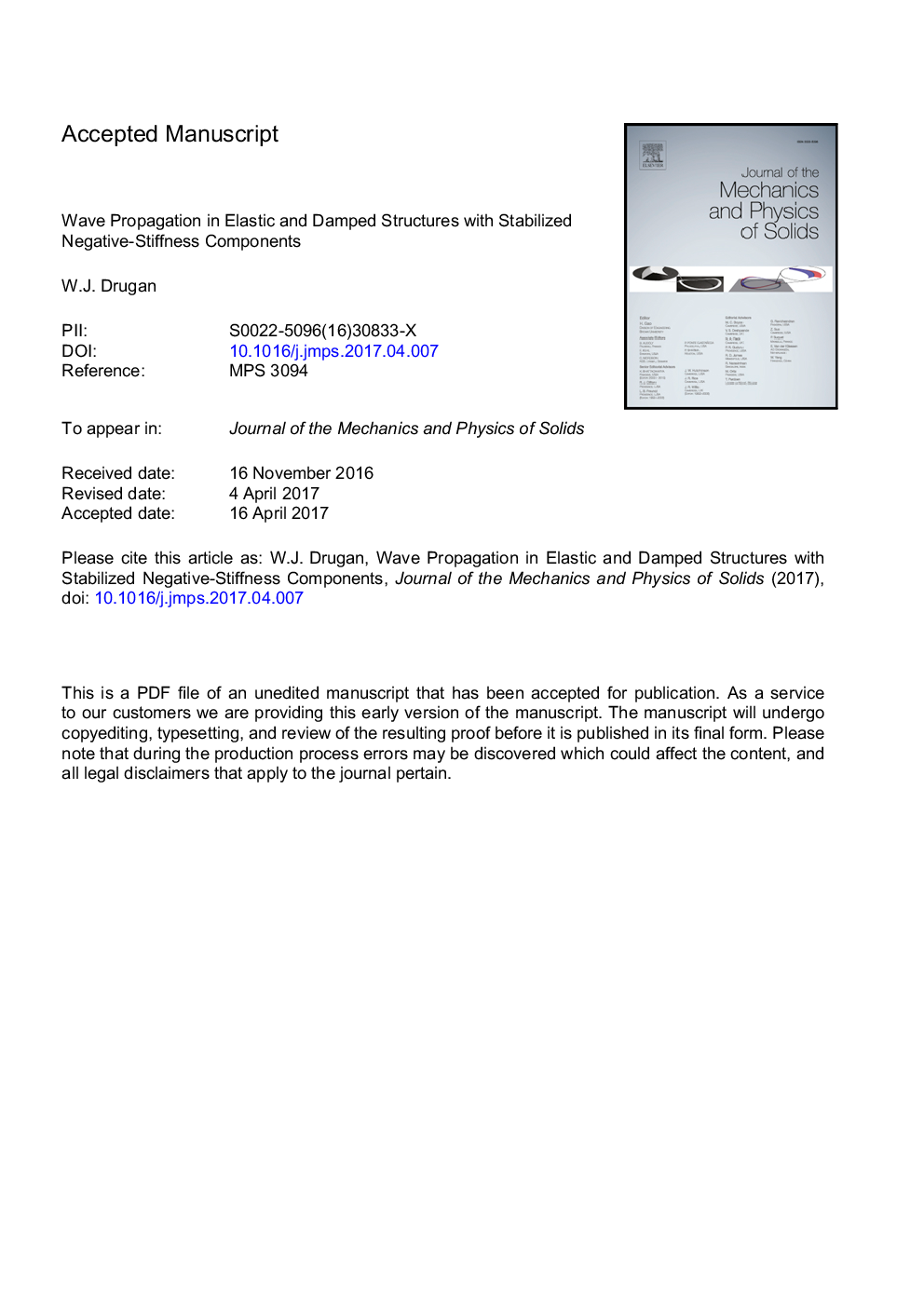| Article ID | Journal | Published Year | Pages | File Type |
|---|---|---|---|---|
| 5018088 | Journal of the Mechanics and Physics of Solids | 2017 | 21 Pages |
Abstract
Effects on wave propagation achievable by introduction of a negative-stiffness component are investigated via perhaps the simplest discrete repeating element that can remain stable in the component's presence. When the system is elastic, appropriate tuning of the stabilized component's negative stiffness introduces a no-pass zone theoretically extending from zero to an arbitrarily high frequency, tunable by a mass ratio adjustment. When the negative-stiffness component is tuned to the system's stability limit and a mass ratio is sufficiently small, the system restricts propagation to waves of approximately a single arbitrary frequency, adjustable by tuning the stiffness ratio of the positive-stiffness components. The elastic system's general solutions are closed-form and transparent. When damping is added, the general solutions are still closed-form, but so complex that they do not clearly display how the negative stiffness component affects the system's response and how it should best be tuned to achieve desired effects. Approximate solutions having these features are obtained via four perturbation analyses: one for long wavelengths; one for small damping; and two for small mass ratios. The long-wavelengths solution shows that appropriate tuning of the negative-stiffness component can prevent propagation of long-wavelength waves. The small damping solution shows that the zero-damping low-frequency no-pass zone remains, while waves that do propagate are highly damped when a mass ratio is made small. Finally, very interesting effects are achievable at the full system's stability limit. For small mass ratios, the wavelength range of waves prohibited from propagation can be adjusted, from all to none, by tuning the system's damping: When one mass ratio is small, all waves with wavelengths larger than an arbitrary damping-adjusted value can be prohibited from propagation, while when the inverse of this mass ratio is small, all waves with wavelengths outside an arbitrary single adjustable value or range of values can be prohibited from propagation. All of the approximate solutions' analytically-transparent predictions are confirmed by the exact solution. The conclusions are that a stabilized tuned negative-stiffness component greatly enhances control of wave propagation in a purely elastic system, and when adjustable damping is added, even further control is facilitated.
Related Topics
Physical Sciences and Engineering
Engineering
Mechanical Engineering
Authors
W.J. Drugan,
